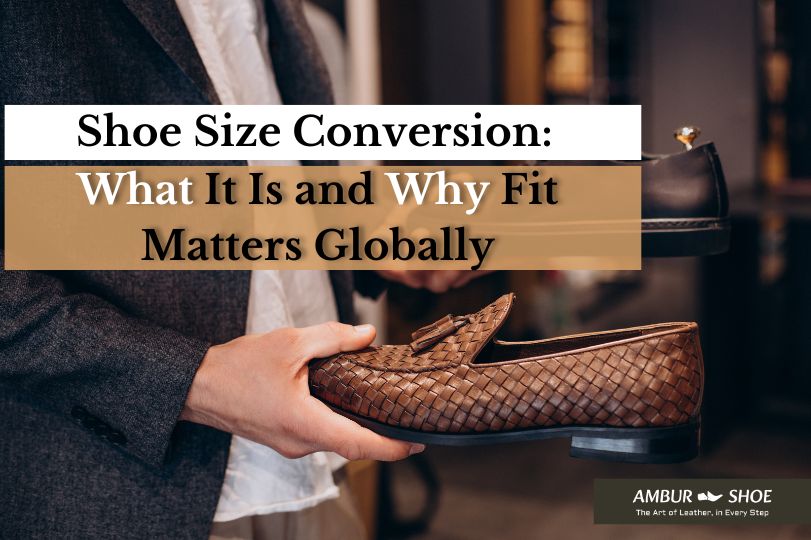Contents
- Introduction
- 1. What Is Shoe Size Conversion?
- 2. Common Shoe Size Systems Around the World
- 3. How to Read a Shoe Size Conversion Chart
- 4. Why Shoe Fit Matters More Than You Think
- 5. Why Global Shoe Size Conversion Matters
- 6. How to Measure Your Foot at Home
- 7. The Role of Leather Shoes in Getting the Right Fit
- 8. Common Mistakes People Make with Shoe Sizes
- 9. Tips to Find Your Perfect Fit While Buying Online
- 10. Why Global Sizing Education Helps Everyone
- 11. How the Digital Era Is Simplifying Shoe Sizing
- 12. Shoe Size Conversion and Sustainability
- 13. The Future of Shoe Sizing Worldwide
- 14. Conclusion
Introduction
Buying shoes online has become the new normal. With a few clicks, you can explore brands from India, Italy, the U.S., or Japan. But there’s one challenge that confuses almost every shopper — shoe size conversion.
A “size 8” in India isn’t the same as a “size 8” in the U.S., and a “42” in Europe may fit differently depending on the brand. This size confusion often leads to wrong purchases, returns, and disappointment.
Let’s break down what shoe size conversion really means and why getting the right fit matters for everyone across the world.
1. What Is Shoe Size Conversion?
- Shoe size conversion means matching your local shoe size (like India or UK) to another country’s size chart (like US or EU).
- It helps people buy shoes made by international brands that use different sizing systems.
- Conversion charts act like translators — they tell you, for example, that an Indian size 8 equals a US size 9 or EU size 42.
Why Different Countries Have Different Sizes
- Each region developed its own measuring method.
- The U.S. and U.K. use inches, while Europe uses centimeters.
- Some countries count the length of the last (foot mold), while others count the inner sole length.
This is why one “number” doesn’t fit all — quite literally!
2. Common Shoe Size Systems Around the World
Here are the most popular sizing systems you’ll come across while shopping globally:
A. U.K. Sizing
- Starts at size 0 for infants.
- Uses a 1/3-inch scale between sizes.
- Common in India, Singapore, and other Commonwealth countries.
B. U.S. Sizing
- Slightly larger than U.K. sizing (about half a size up).
- A U.S. 9 = U.K. 8.5.
- Used mainly in North America.
C. European (EU) Sizing
- Measured in Paris Points (2/3 cm per size).
- Unisex, so both men’s and women’s shoes share the same numbers (e.g., 42).
D. Mondopoint System
- Used by the military and in some Asian countries.
- Measures foot length and width in millimeters, giving a precise fit (e.g., 260/95).
E. Indian Shoe Sizes
- Often based on U.K. sizing, but not standardized across all brands.
- Some local brands modify it to suit regional fits.
3. How to Read a Shoe Size Conversion Chart
A shoe size conversion chart helps you find your matching size across regions.
Shoe Size Chart – Men’s Sizes
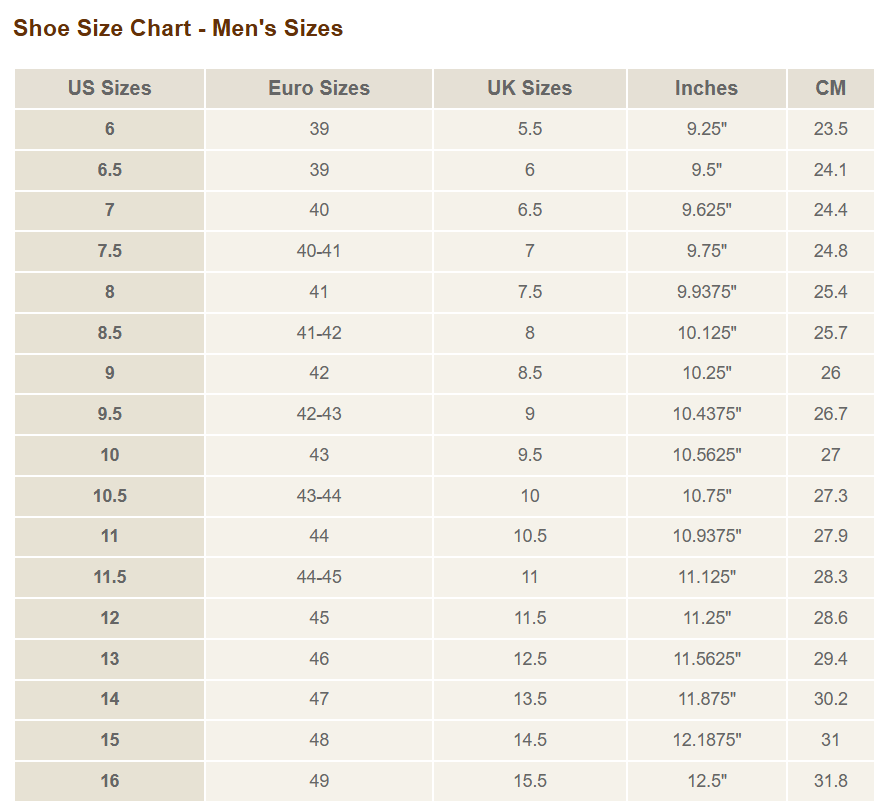
Shoe Size Chart – Women’s Sizes
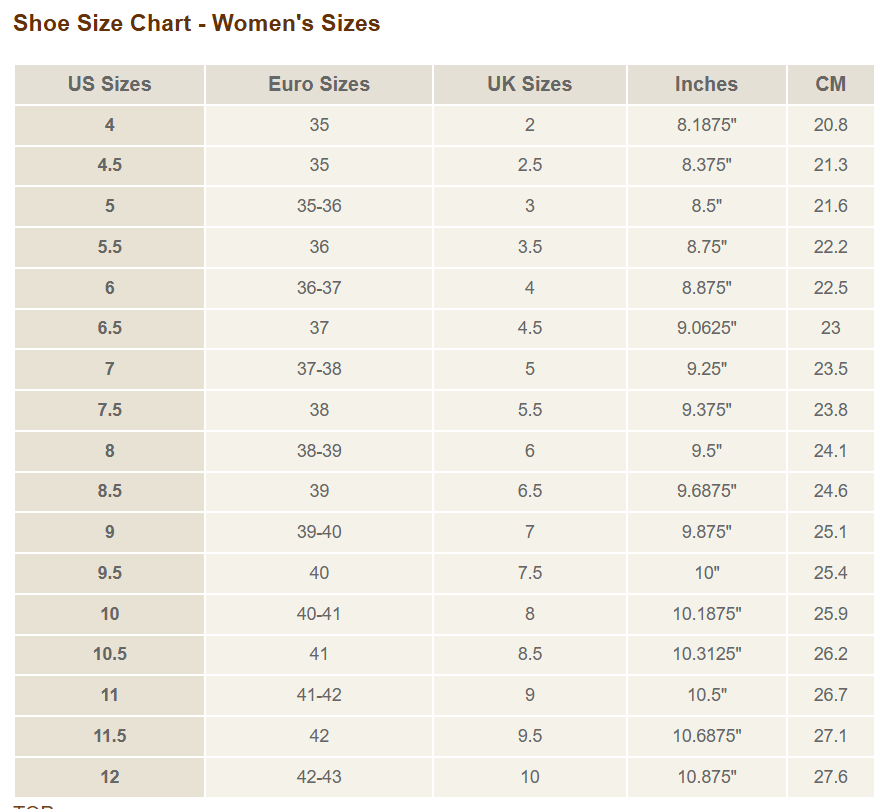
Youth Size Conversions (6 – 10 years)
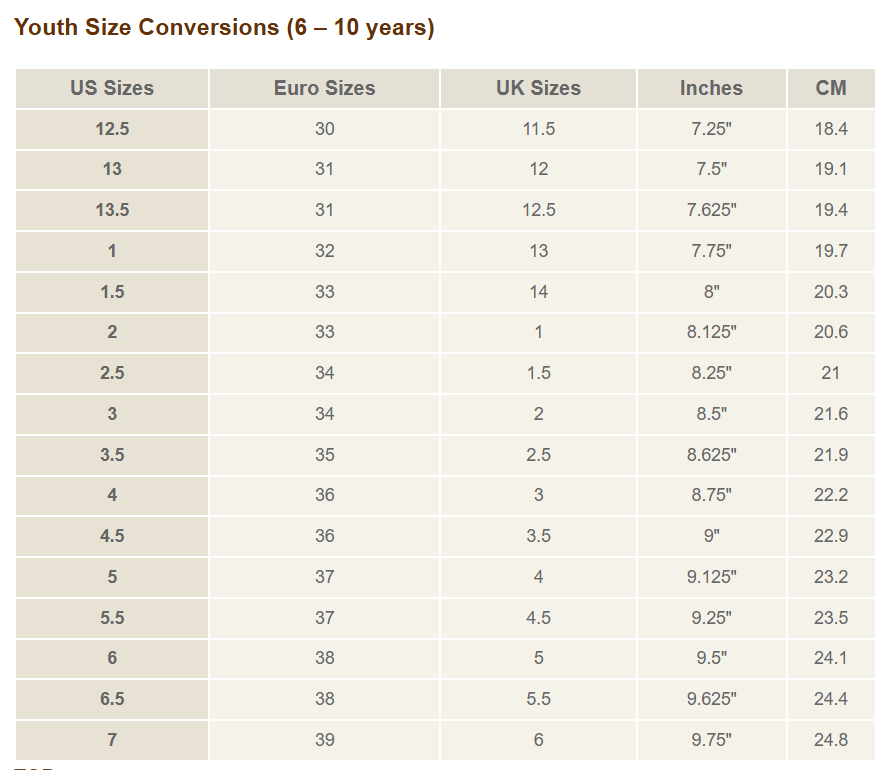
Kids’ Size Conversions (1 – 5 years)
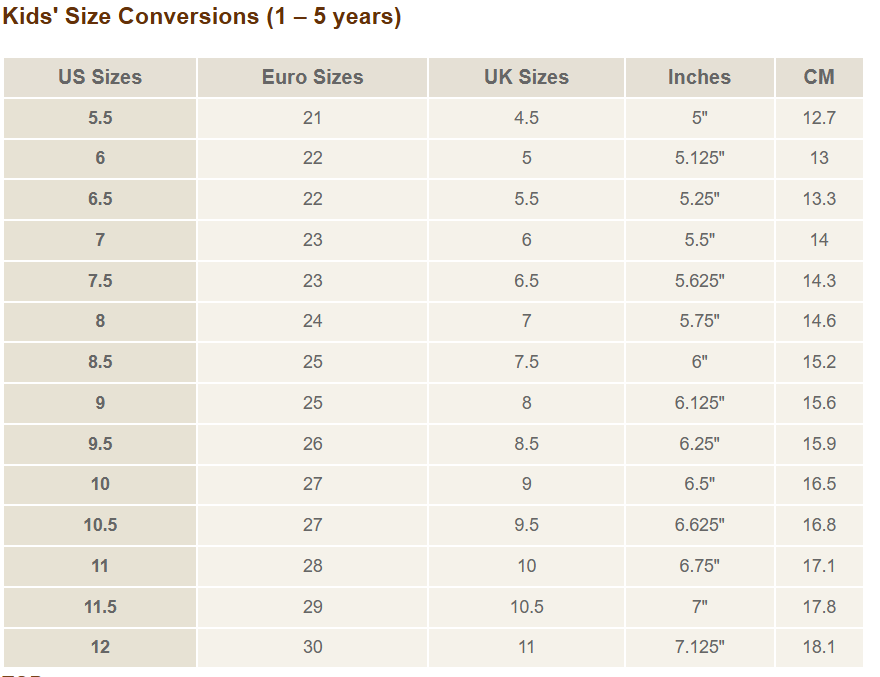
- Always measure your foot length in centimeters and check where it fits in the chart.
- Different brands may vary slightly — always check their official chart before buying.
4. Why Shoe Fit Matters More Than You Think
A perfect fit isn’t just about comfort — it affects your health, posture, and confidence.
A. Comfort and Performance
- Tight shoes cause blisters, while loose ones lead to friction.
- The right fit supports your foot’s natural movement and balance.
B. Prevents Foot Problems
- Wrong sizes can cause bunions, corns, and arch pain.
- A correct fit gives proper alignment to your ankles and knees.
C. Longevity of Shoes
- A shoe that fits well wears evenly and lasts longer.
- Poor fit can stretch or deform leather, reducing the shoe’s life.
D. Confidence and Style
- The right fit improves your walk and posture.
- Well-fitted shoes always look more elegant and expensive.
5. Why Global Shoe Size Conversion Matters
A. Growing Online Shopping
- Cross-border online shopping is booming.
- People buy from international brands without trying them physically.
- Conversion charts help reduce wrong orders and returns.
B. Globalization of Footwear Brands
- Indian buyers can shop Italian loafers or U.S. sneakers easily.
- International sizing knowledge lets you explore global fashion fearlessly.
C. Export and Manufacturing Benefits
- For footwear makers (like those in Ambur, Tamil Nadu), size conversion ensures their products meet global size standards, helping in exports.
6. How to Measure Your Foot at Home
Here’s a simple way to find your correct size before using any conversion chart:
- Place a sheet of paper on the floor near a wall.
- Stand with your heel touching the wall.
- Mark the longest toe on the paper.
- Measure the distance from the wall to that mark — that’s your foot length.
- Compare it with the brand’s size chart.
Pro Tip:
Always measure both feet — most people have one foot slightly larger. Choose your shoe size based on the larger foot.
7. The Role of Leather Shoes in Getting the Right Fit
- Leather shoes naturally stretch a little over time, giving a custom fit.
- But starting with the correct size is still crucial.
- Handcrafted leather shoes, like those from Ambur, are designed for long-term comfort — if chosen in the right size.
Fitting Tip for Leather Shoes
- Try them in the evening, when your feet are slightly swollen — this ensures comfort all day.
- Always wear the same type of socks you plan to use daily while testing fit.
8. Common Mistakes People Make with Shoe Sizes
- Assuming all brands fit the same – they don’t.
- Not checking width options – wide or narrow feet need different fits.
- Ignoring country differences – a “42” in EU may not match a “9” in the U.S.
- Skipping the size chart – even trusted brands update their measurements.
- Not considering material – leather expands, synthetic doesn’t.
9. Tips to Find Your Perfect Fit While Buying Online
- Always check the brand’s official conversion chart.
- Read customer reviews — many mention if the shoe runs “small” or “large.”
- Choose sites that offer easy returns or exchanges.
- For leather shoes, allow a short break-in period before judging fit.
- If you’re between sizes, choose the larger one for comfort.
10. Why Global Sizing Education Helps Everyone
- It saves time, money, and waste caused by returns.
- Helps manufacturers create standardized products for all markets.
- Builds trust between global brands and consumers.
- Encourages local makers (like Ambur Shoe) to reach international customers confidently.
11. How the Digital Era Is Simplifying Shoe Sizing
- Brands now use AI-powered size recommendation tools on their websites.
- Some apps let you scan your foot using your phone camera for exact measurement.
- This tech revolution is reducing confusion in global sizing like never before.
12. Shoe Size Conversion and Sustainability
- Every return means more shipping, packaging, and carbon emissions.
- When you get the size right the first time, you help reduce fashion waste.
- Right fit = less return = more sustainability.
- Many eco-friendly brands now highlight proper sizing as part of their green policy.
13. The Future of Shoe Sizing Worldwide
- Expect to see universal size codes in the future (like “SmartFit ID”).
- AI and 3D scanning will replace old charts.
- Virtual try-on tools will allow you to “see” how the shoe fits before buying.
- Custom-fit leather shoes will become more accessible globally.
14. Conclusion
Shoe size conversion may sound simple, but it’s one of the most important tools for global footwear shopping. Understanding it ensures comfort, confidence, and long-lasting shoes.
Whether you’re buying handcrafted loafers from Ambur, sneakers from the U.S., or boots from Italy, always remember — fit first, style next.
A well-fitted shoe not only protects your feet but also speaks volumes about your attention to detail and quality.
Recommended Read
If you love premium leather products, you’ll also enjoy our detailed guide —
5 Must-Have Leather Bags from Top Indian Brands for All Needs
Discover stylish and durable leather bags that match your everyday lifestyle.
Join the Conversation
We’d love to hear from you!
- Have you ever faced trouble with shoe size conversion while shopping online?
- Which country’s shoe sizing system do you find most accurate?
Share your thoughts in the comments below!

